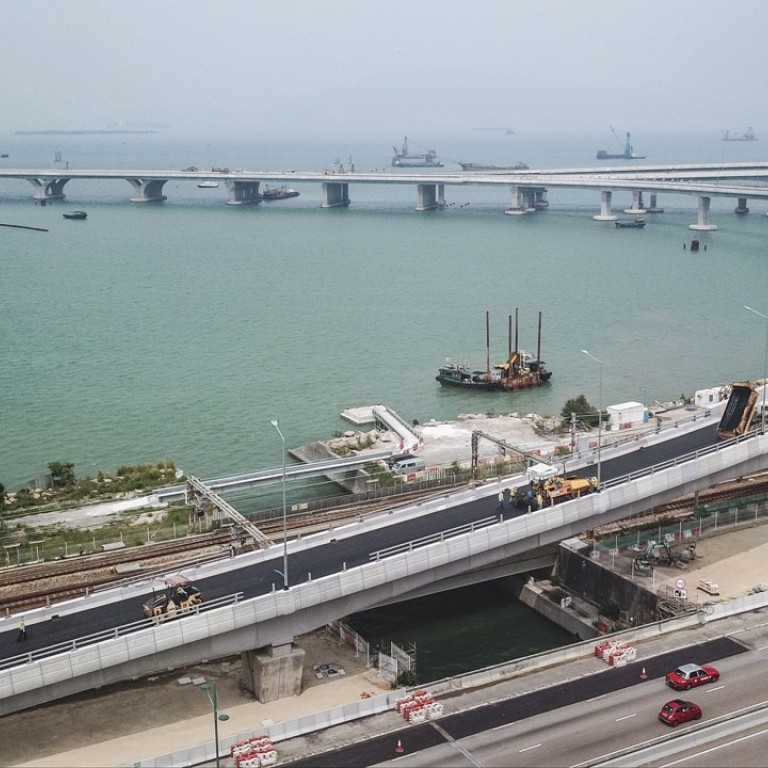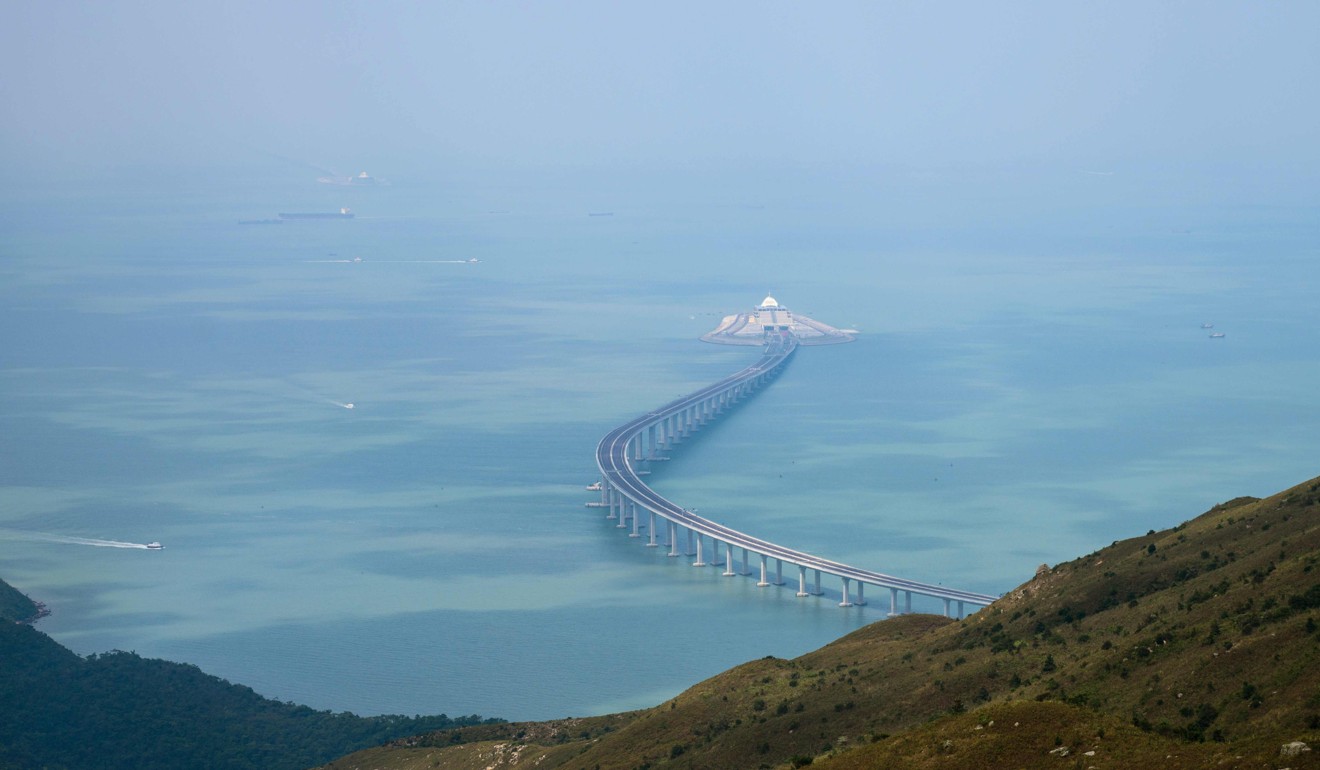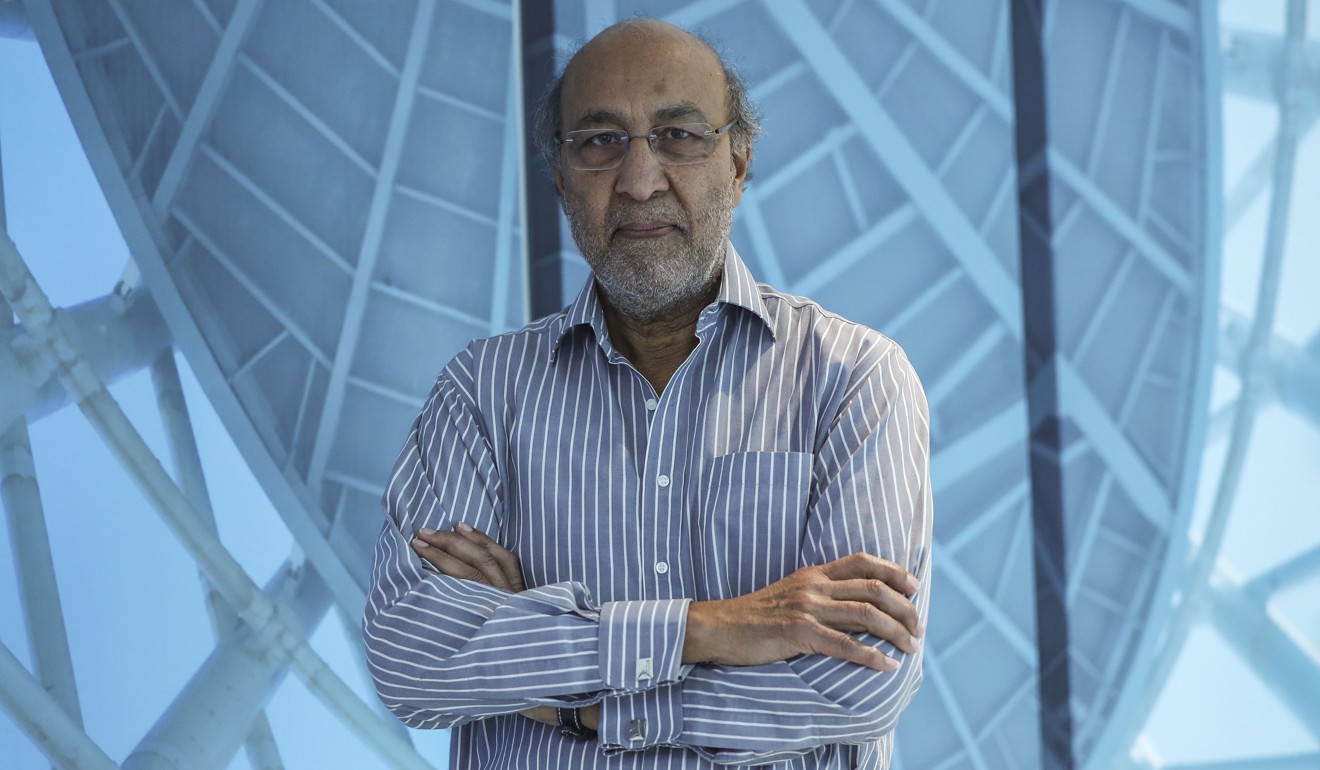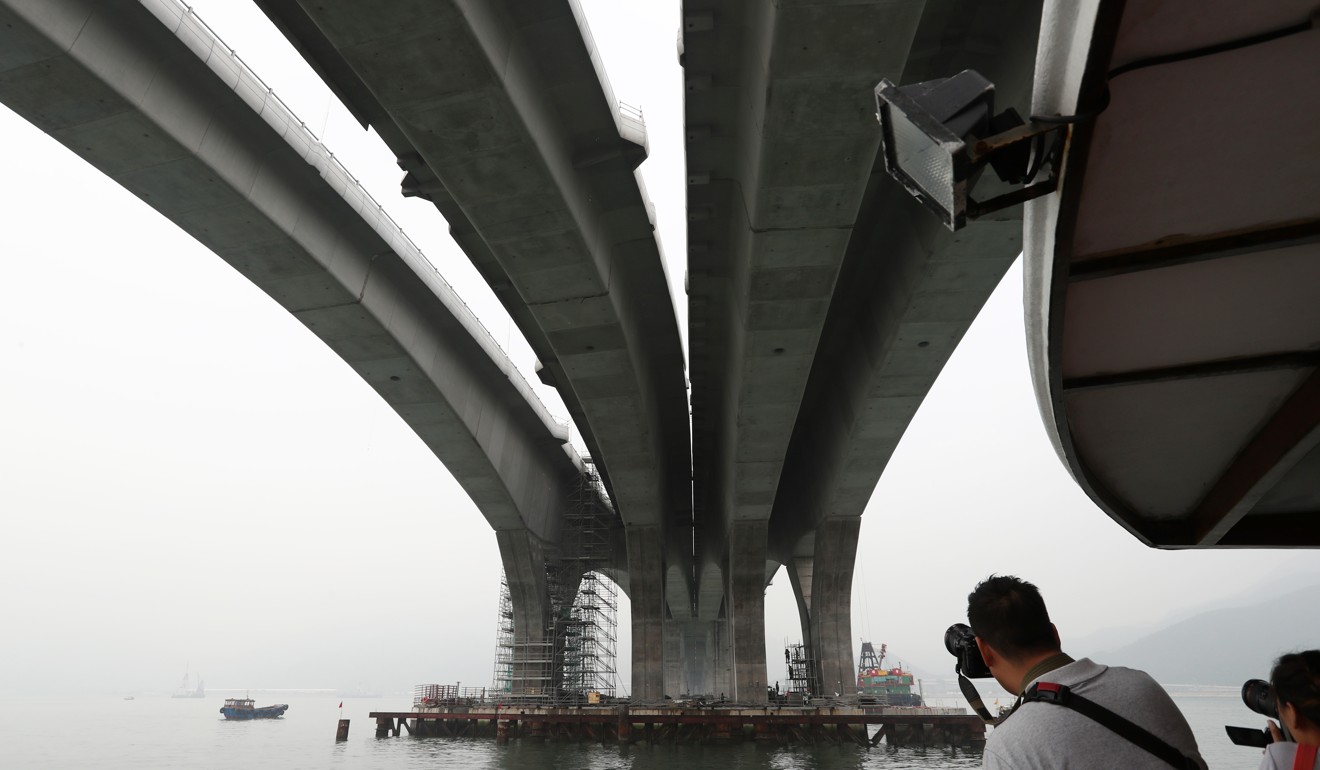
‘Unique and beautiful’ design for Hong Kong-Zhuhai-Macau bridge sets mega project apart in the world, engineer says
- Team behind landmark project needed to address environmental challenges such as frequent typhoons, airport height restrictions and the habitat of dolphins
- Curves on main deck of bridge meant to resemble a snake and reduce boredom of those traversing the 55km link
What is the connection between dolphins, sails and Chinese knots? A ride across the world’s longest sea crossing, linking Hong Kong to Zhuhai and Macau, might reveal the answer. But only for those paying close attention.
Three distinctive features mark the project’s navigation channel bridges, and together they set the mega project apart in the world, according to the award-winning designer behind the multibillion-dollar Hong Kong-Zhuhai-Macau bridge launching on Wednesday.

Naeem Hussain, global bridge leader for the multinational engineering firm Arup, told the Post that uniqueness figured prominently when he developed the final design with other experts. They aimed to create an iconic visual identity for each of the three structures not found anywhere on the planet.
“We don’t copy!” the veteran engineer said with a chuckle. “Seriously, we were all trying to do something unique that nobody had done before.”
In a joint venture with the China Highway Planning and Design Institute (HPDI) and other firms, Arup undertook the preliminary design of the mega bridge in 2009 after the consortium won the design competition.
After completing the preliminary design, the joint venture proceeded to development. Detailed discussions ensued with a special delivery team comprising representatives from the three governments and concerned parties responsible for coming up with a final design for construction.
Arup’s mission focused on the design of the bridge’s main stretch over mainland waters, seeking to deliver something special and attractive for the landmark crossing while addressing environmental challenges such as frequent typhoons, airport height restrictions and the habitat of dolphins.
“When we were designing the bridge, we wanted it to look attractive from various viewpoints so that people could enjoy it,” Hussain explained, noting the respective governments were “very keen” on “a uniquely aesthetic design”.
“The idea was that as you drive across the bridge, you see a different shape for each of the three navigation channel bridges. Otherwise they’d all look the same.”

In the end, they came up with three shapes for the towers above the bridges depending on the areas they span: dolphins for Jianghai, Chinese knots for Qingzhou, and sail towers for Jiuzhou resembling a boat’s mast.
The mega link’s location across the sea means it is visible to the public by land, sea and air, Hussain added.
And to reduce boredom for drivers, the design incorporated curves to make it look like a snake.

Apart from its aesthetic appeal, the mega structure was built to last 120 years. It can withstand storms packing winds exceeding 340km/h.
Hussain said the bridge’s lifespan conformed to that of global standards, and it could last an additional 40 to 50 years with proper maintenance.
World’s longest sea crossing is finished – but construction came at a price
“That doesn’t mean the bridge will fall down after 120 years,” he added with a smile.
To minimise impact on the flow of water under the bridge and on the habitat of Chinese white dolphins, the structure is supported by single column piers with piles buried in the seabed. These reduce pollution as well as obstructions.
Hussain said the cable-stayed design was chosen because it was the most economical. Building materials and the number of hours spent in construction were to be kept to a minimum.
Hong Kong told to expect traffic restrictions on mega bridge
As he sees it, the three navigation channel bridges are what make the project stand out.
“It's like a snake, then you see lovely towers atop the bridge,” he said. “Each one is unique. It’s beautiful.”

